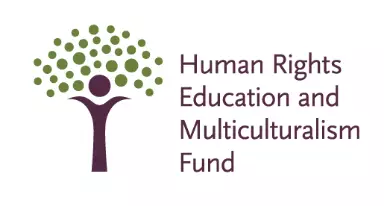Indigenous Agency Timeline: Introductory Level
Provide corresponding dates for the following events:
- First Nations apply to King Edward VII to have the Privy Council determine Aboriginal title.
- In the Sparrow decision, the Supreme Court concludes that the Musqueam people’s Aboriginal right to fish for food and ceremonial purposes has not been extinguished.
- The Jay Treaty is signed, assuring free and unencumbered passage across the Canada-US border for Indigenous North Americans.
- Indigenous people in Canada are permitted to vote in federal elections.
- A delegation of chiefs from Fort Simpson and the Nass (in territory now overlain by BC) travels to Victoria to petition for the return of their lands and for a formal treaty guaranteeing their rights to those lands.
- Chiefs travel to England to oppose the repatriation of the Constitution to Canada, arguing that their treaties had been made with England, not Canada, and should be honoured as such.
- The government of Nunavut comes into being as a self-governing territory of the Inuit people.
- The Allied Tribes of British Columbia form to pursue recognition of title and treaties.
- For the first time, the Northwest Territories elects an Indigenous majority in its Legislative Assembly.
- The Powley case sets a precedent by establishing Métis hunter Steve Powley’s right to hunt out of season.
- 3500 Indigenous people serve Canada in this World War (and will not receive benefits equivalent to those of non-Indigenous veterans).
- In what became known as the Oka Crisis, the Quebec government and the federal government call in their respective militia in an attempt to stop a blockade made by members of the Mohawk communities of Kanesatake and Kahnawake, who were protesting the appropriation of their land for a nine-hole golf course. The standoff receives international attention and scrutiny.
- The Royal Proclamation of this year is signed by England. This document explicitly recognizes Aboriginal title. Aboriginal land ownership and authority are recognized by the Crown as continuing under British sovereignty. It states that only the Crown can acquire lands from First Nations people and only by consent of the First Nations people and formal agreement.
- Canada finally endorses the UN Declaration on the Rights of Indigenous Peoples, more than three years after the Declaration was ratified, and reversing its initial refusal to support the declaration.
- Fears regarding the increase of Indigenous peoples’ activism in pursuit of land claims results in amendments to the Indian Act, making it illegal for Indigenous people to raise money or retain a lawyer to advance land claims.
- Dene chief Frank T’Selei and Dene spokesperson Stephen Kakfwi vehemently oppose the construction of the proposed Mackenzie Delta pipeline on behalf of their people and land. When the Berger Commission releases its report in two years’ time, it will, based on the voices of Indigenous communities, reject the proposal and recommend any further consideration be delayed for at least 10 years.
- Canada’s Constitution Act, in Section 35, recognizes and affirms Aboriginal rights. This Act recognizes the Inuit, First Nations, and Métis people as Aboriginal peoples.
- In the Delgamuukw Case, the Supreme Court agrees unanimously that the Gitxsan-Wet’suwet’en people had never relinquished title to their territory and that oral history, presented in Indigenous languages, can be accepted as evidence in Indigenous land claims cases.
- The first Nisga’a petition to the government regarding their claims to their territory in what is now overlain by BC.
- Despite government legislation banning their traditional form of government, Iroquois chiefs and clan mothers continue to meet on the Six Nations Reserve in Ontario and are evicted by the RCMP.
- Protests by Cree leaders lead to a Quebec court decision halting the James Bay Hyrdo Project, which would flood vast amounts of traditional territory, including crucial hunting and trapping areas.
- British Columbia joins Confederation. While the population of the new province is made up of a majority of Indigenous people, they are given no role in the decision making processes of the province.
- The Whitebear Nation in Saskatchewan receives $19 million in a land claim settlement for land that was illegally sold in 1890.
- First Nations people set up a protest blockade near Fort St. John, blocking miners and demanding a Treaty.
- The Nisga’a people go to court in the Calder case. In four years, the Supreme Court will rule that the Nisga’a did hold title to their traditional territory prior to the creation of BC as a province.
- The National Indian Brotherhood’s policy document-Indian Control of Indian Education is put forward and continues to be instrumental in the dismantling of the Indian Residential School system.
- In a backhand acknowledgement of the power of the Six Nations Confederacy, the Canadian government refuses to allow the Confederacy to remain as the traditional government of the Iroquois people on the Six Nations Reserve in Ontario.
- Chiefs from Saskatchewan present Queen Elizabeth II with a sacred pipe and scroll to remind her of the promises Britain has made to Indigenous people.
- Harold Cardinal issues The Red Paper in response to the federal government’s assimilationist White Paper. The groundswell of political activism among Indigenous people leads to the government’s withdrawal of its paper, which proposed, among other things, the abolishment of treaties.
- National Day of Truth and Reconciliation is established as a federal statutory holiday. The day acknowledges the horrors inflicted upon Indigenous communities through forced attendance to residential schools. This day honours the survivors, children who didn’t make it home, and the family and community members of both.





